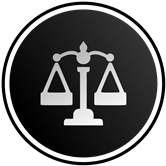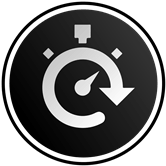Updated on November 01, 2025 05:33:18 PM
Copyright Registration is a legal procedure that helps to provide lawful protection to an innovation or original work. These innovations can be anything such as literary work, artistic work, music and any computer-generated work as well. Through getting copyright registration the owner can take several commercial and moral benefits. Therefore a creator must get their work copyrighted.
In this article, we will go through the complete process of Copyright Registration, the documentation and fees required, which will help you to get a Copyright Certificate in an easy manner.
Copyright is a form of intellectual property law that aids in protecting a creator's work's uniqueness. An individual or business can secure their invention through Copyright Registration under the Indian Copyright Act of 1957. This symbol indicates that the work is original and legally protected.
Copyrighting the work can have several advantages for the author, both commercially and morally. A copyrighted work gives protection against copies for a certain period of time, but it does not prevent someone from accessing an idea contained in the work.
When an individual seeks to prevent his/her creation by Copyright Registration in goa, they have to file the application. It is the initial stage of Copyright Registration. The applicant also has to pay a suitable cost along with the application. The fee for Copyright Registration in goa can be from ₹500 to ₹40,000, depending on the type of work.
Just after filing the application, the Registration office issues a diary number. The diary number is a unique identification that is given to the applicant during the Registration. This number helps in tracking and inquiring about the Registration procedure.
After getting the Diary number, the applicant has to wait for a 30 days mandatory cooling-off period. In these 30 days, the examiner reviews the application and waits for any objection. Here one who has an issue regarding the similarity or piracy can file an objection and the application will be reviewed. After the waiting period is over two cases can occur.
If a third party objects to a copyright application within 30 days, the process is halted. The examiner notifies both parties and they must respond to the objection. The application remains on hold until the matter is resolved between the applicant and the objecting party.
Just after the reply, a hearing is conducted by the registrar where they both have to submit relatable documents to prove their sides. At this stage if the registrar gets satisfactory evidence the application will be sent for the next procedure otherwise the application will be rejected.
If no objection is raised in these 30 days and all the documents are appropriate, the application is sent to the stage for scrutiny and discrepancy check.
When the objection period is over the application goes for the examination. At the examination process, the examiner scrutinises and tries to find out discrepancies if any. Here again, two situations may occur these are:
During the scrutiny by the examiner if any discrepancies occur, a“Discrepancy Letter” is sent to the applicant. “The Letter of Discrepancy” generally outlines the issues that have been found in the requested application.
After receiving the letter, the applicant has to reply on behalf of that and a hearing conducted by the registrar. At the hearing process, if the registrar gets satisfying evidence or reply they send the application to the next step otherwise the application will be rejected.
If the registrar found no discrepancies and all the documents are appropriate, the application is forwarded to the next step. Where the application gets their Registration certificate.
When the application undergoes all the above-mentioned steps then the final stage is Registration. At this stage, the applicant receives the Copyright Register Certificate.
This certificate serves as the legal proof of ownership where the applicant receives all the exclusive rights of the production and distribution of the original work. But if the application is rejected by the registrar so the rejection letter is sent to the applicant.
Here is the list of some common documents required for Copyright Registration:
Note: The documents can be different on the basis of the work material or original creation.
Copyright Registration is a legal procedure that helps in protecting a creative work and provides several exclusive rights to the creator. The main purpose of Copyright registration is to provide legal protection, licensing & royalty to the original creator.
During the Registration process, the applicant has to deal with several stages such as application filing, examination process and registration. It is a vital step in safeguarding the intellectual property of a creator. However, the applicant must submit all the appropriate documents that help the examiner.

Legal Consultation

Expert Lawyers

Lowest Fees

Quick Process
Copyright Registration is a legal procedure that provides legal ownership over the original work.
Two copies of work, Demand Drafts, NOC, PoA and identity proofs are the common documents that are required for Copyright Registration. The documents can differ on the basis of the nature of creation or work.
The fees of Copyright Registration can be ₹500 to ₹40,000 in accordance with the nature of the work and creation.
There are mainly five steps to registering a Copyright which includes gathering information about the work, filling out an application with fees, objection procedure, examination process and registration.
Disclaimer: The content provided on this site is intended for informational purposes only. Accessing or utilizing this site and its materials does not establish an attorney-client relationship. The information contained herein does not constitute legal or professional advice and should not be relied upon as such. It is not a substitute for obtaining legal counsel from a qualified attorney licensed in your jurisdiction.